Lost joys: Directors reveal searches for missing movies
- Published
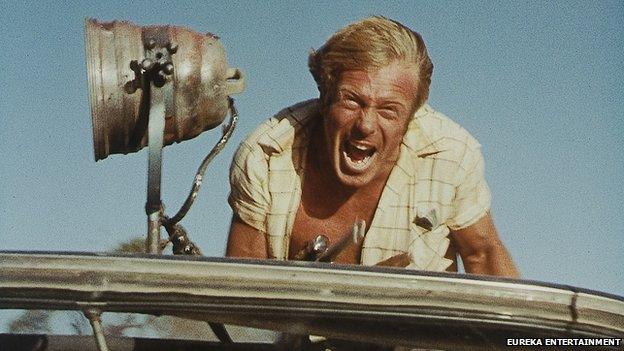
The original negatives of 1971's Wake In Fright were found just a week before they were due to be burned
Three very different films thought to have been lost to audiences forever are being re-released. Here their directors tell how the movies were mislaid and then found.
Wake In Fright
Shot in Australia in 1969 and starring British actors Gary Bond and Donald Pleasence, Wake In Fright was Toronto-born director Ted Kotcheff's second feature and is regarded as a masterpiece of modern Australian cinema.
The film tells of teacher John Grant, played by Bond, who arrives in the outback mining town of Bundanyabba. Despite planning to spend just one night there before catching a plane to Sydney, he is drawn into five nights of alcohol abuse, gambling and the slaughter of kangaroos.
The movie premiered at the Cannes Film Festival in 1971 where it was nominated for the Palme d'Or and its US distribution rights were sold.
Retitled Outback, the feature played in cinemas for about a week before it was dropped from circulation due to poor attendances and a lack of advertising.
It had a small number of screenings in the UK before vanishing without a release on VHS or DVD.
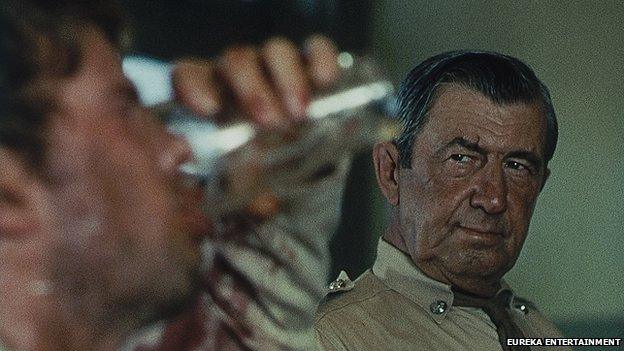
Wake In Fright sees a teacher trapped in a cycle of binge drinking and violence

British actor Donald Pleasence features as a troubled doctor
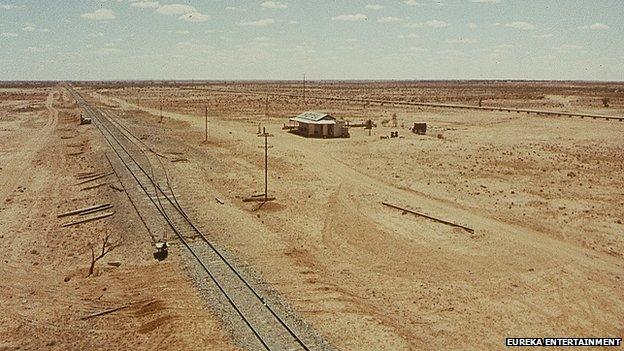
The film is set against the backdrop of the Australian outback
The film's negatives were thought to have been lost for more than three decades until its cinematographer, Tony Buckley, found the originals in canisters marked for destruction a week before they were due to be incinerated in the US.
It has now been restored frame by frame and will be released in UK and Ireland cinemas on Friday.
Kotcheff, now in his 80s and living in Mexico, said: "A fact of cinema exhibition life during the 1970s was that the original negative of a film might be housed for long periods with a film laboratory for use in generating new prints to support the distribution schedule.
"These labs would generally be in Europe, Britain or the United States and sometimes the negatives would be completely overlooked once their usefulness passed.
"For the National Film and Sound Archive and for Tony Buckley, the frustration of this process was that over the years the exact location of the original negative for Wake In Fright was lost.
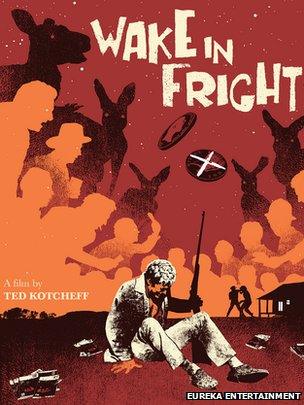
Wake In Fright has been restored frame by frame for re-release in cinemas
"Whilst existing prints continued to be exhibited and progressively damaged beyond repair, the original source material had disappeared."
For those who saw it more than 40 years ago, one of its most memorable - and disturbing - scenes involves the massacre of kangaroos.
Kotcheff and his crew accompanied a real-life cull of the animals for the making of the film. The kangaroos were shot so their hides could be used for making soft toys and the meat sold for dog food.
The director said: "I did not use 75% of what I filmed that night as it was too bloody and horrifying.
"The Royal Australian Society for the Prevention of Cruelty to Animals kept urging me to use this footage because they wanted Australians and the world to see what was being done to kangaroos in the outback: the wholesale slaughter and carnage being committed every night.
"I loved the kangaroos - I spent a lot of time with them, intimately close. They would lie around my director's chair, waiting like extras to be asked to do something."
Monarch: Henry VIII
Part fact, part fiction, 2000 film Monarch: Henry VIII revolves around one night after the king arrives at a manor house closed for the season.
Irish-born actor TP McKenna plays the monarch - who in this version is without the power and control of his palace - while Upstairs Downstairs actress Jean Marsh stars as an amalgamation of his ex-wives.
The film has been painstakingly remastered from the original 35mm colour camera negative after it was recently discovered in a vault almost 20 years after it was originally filmed. It will be released on DVD in April.
"During the shoot of Monarch my small cast and modest crew would receive daily film stock supplies directly from Kodak HQ in Hemel Hempstead," director John Walsh said.
"A refrigerated van would arrive to bring us our daily ration of camera negatives.
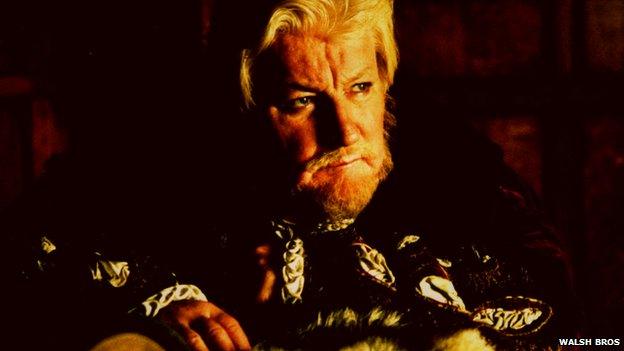
TP McKenna as Henry VIII
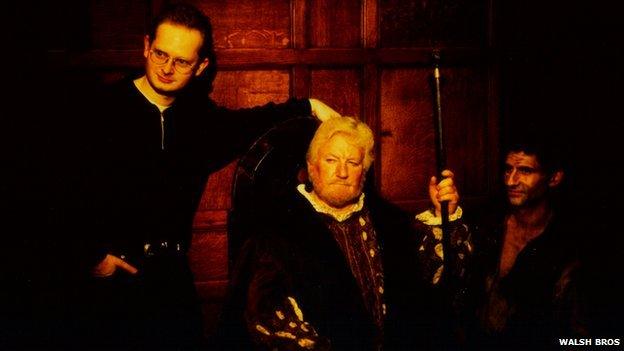
Monarch director John Walsh and cast members TP McKenna and Mark Montgomerie
"Another production was receiving a daily delivery from the same driver - Stanley Kubrick's final film, the epic 18-month shoot, Eyes Wide Shut.
"When we received Mr Kubrick's invoice after a clerical error, I was shocked and amazed at the amount of the invoice - more than the total cost of my shooting budget."
Walsh added: "When we located the project we found more than we bargained for with over 52 cans of various footage from film trims, cutting copies and work prints.
"We didn't know if the original camera negative would be amongst all of this haul. After a close examination I was delighted to find all of the original camera negative was there and in good shape for its age."
Every frame of film has been scanned in high definition and had more than 10,000 particles removed by hand. A new sound mix was also created from the original elements.
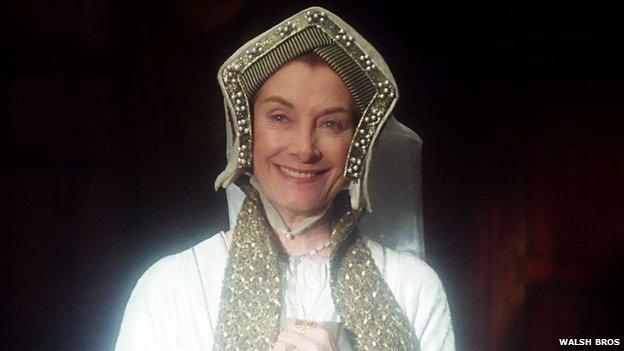
Jean Marsh portrays Henry's wives in Monarch
Walsh said negatives mislaid or incorrectly labelled when put into storage were at risk of being lost for good.
"The process of storing and preserving original materials is one that the film and TV industry is famously inept at," he said.
"During this process I was surprised to find many of the 20th Century's major film titles have lost their original elements and the restoration process starts with old battered projection prints that may have been around many cinemas.
"Often the original camera negatives have been lost, junked or in one famous case for the Oscar-winning Cabaret, burnt."
Walsh added: "Time is against the restoration teams as many films are fading and decaying in poor storage conditions. Some films are considered to be lost for all time.
"The holy grail for collectors is London After Midnight. The 1927 silent horror-mystery starring Lon Chaney and produced by MGM has not been seen for almost 50 years."
Black Angel
Double Academy Award winner Roger Christian attaches a great deal of luck to his debut film, Black Angel.
George Lucas commissioned Christian, who won his first Oscar for his set decoration on Star Wars: Episode IV - A New Hope, to make the short to accompany the 1980 release of The Empire Strikes Back.
The Toronto-based Londoner shot his fantasy tale of a war-weary knight returning home from the Crusades in Scotland in the autumn.
"The light in Scotland in September and October is fantastic, but because we were filming in the Highlands so late in the year there was the risk it would start snowing and bring an end to the shoot," he said.
It did start snowing, but it was on the crew's last day and were on their way home to England.
Other twists of good fortune included mist rolling atmospherically across the sea in a scene filmed outside historic Eilean Donan Castle in Kyle of Lochalsh.
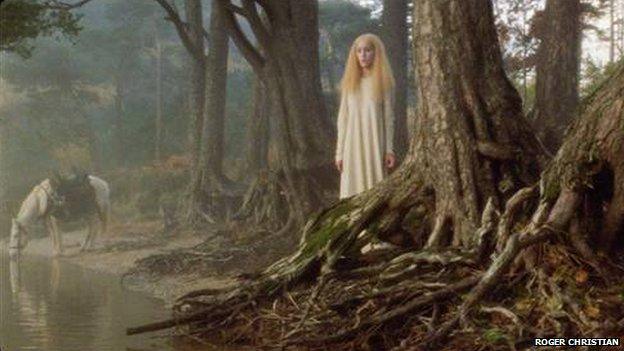
A scene from Black Angel
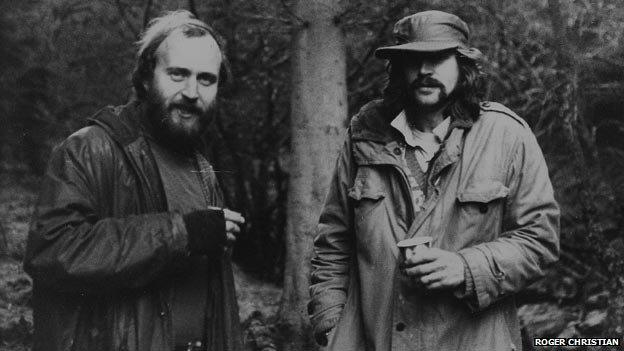
Roger Christian, right, with cinematographer Roger Pratt while shooting Black Angel
Christian had also wanted to create a rainbow-like halo around the head of one of Black Angel's characters, but no amount of trying would make it work.
However, while the film was being cut, it was discovered by chance natural light had created the sought after effect.
But Black Angel's lucky streak appeared to have expired when, after The Empire Strikes Back had finished its run in cinemas worldwide, the original film prints for the 25-minute short were lost.
Unsuccessful efforts were made to track down the prints at Lucas's Skywalker Ranch.
Christian said: "I had my own copy, but it was degraded. I [would have] preferred Black Angel become a myth rather than show a poor quality version of it."
While Black Angel was lost, it was not forgotten. Christian was frequently asked by fans at science fiction conventions and also friends such as Peter Briggs - who wrote the script for 2004's Hellboy - to re-release it.
He had almost given up on the prints when he received a call in 2012 from a Universal Studios archivist who told him he had found them.
They had ended up in the US following the collapse of UK studio Rank which, it turned out, had stored the prints along with other film negatives in World War Two bunkers.
In the past few weeks, Black Angel has been given special "homecoming" screenings in Glasgow, Dundee, Inverness and Edinburgh. There are also plans to release it on Blu-Ray.
Christian returned to Scotland for the first time in 34 years to attend the screenings.
During his visit, he revealed how a poster of Scotland on a wall of a Mexican hospital, where he had been admitted as a patient after falling seriously ill during the making of 1970s movie Lucky Lady, inspired him to make a film in Scotland.
"I was near death," he said. "For some reason on a wall in the room where I was being treated in this small, Mexican village sanatorium was a poster of Scotland.
"It showed lochs. It helped me want to stay alive."